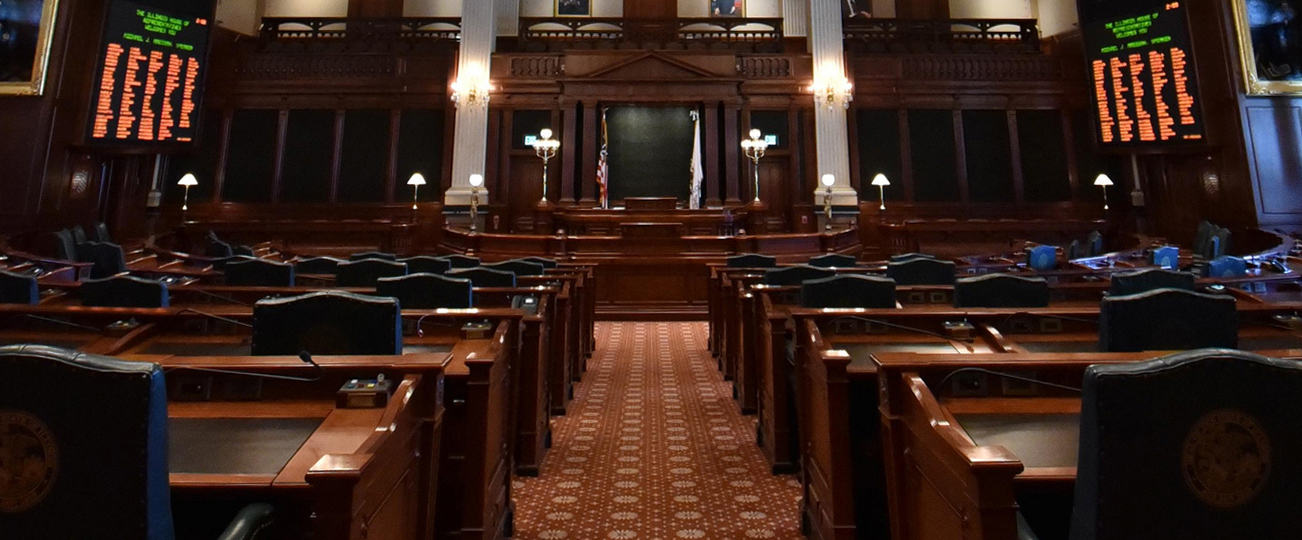Illinois electricity customers were hit with sticker shock this summer when an extended stretch of 90–100-degree heat and high humidity drove up energy demand and strained the grid.
Illinois’ electricity grid is managed through a multi-layered system involving several key organizations — each responsible for different aspects of generation, transmission, regulation, and distribution.
There are two Regional Grid Operators that manage Illinois’ energy grid. PJM Interconnection, which manages the wholesale electricity market in northern Illinois serviced by energy giant Commonwealth Edison, and Midcontinent Independent System Operator (MISO), which manages the grid for central and southern Illinois and handles transmission reliability, wholesale markets, and regional planning in downstate Illinois’ Ameren territory.
In 2021, the Illinois General Assembly passed the Climate and Equitable Jobs Act (CEJA). The act requires that all coal-fired electric generating plants except for Prairie State and Dallman Unit 4 be retired by 2030. It requires that all electricity generation in the state be made by non-carbon-emitting means by 2045.
In the years following CEJA becoming the law, four Illinois coal sites had their coal-fired generating units retired, taking the baseload power that those sites generated off the grid, harming overall electricity generation capacity.
The April MISO capacity auction, which set capacity prices for the summer months, resulted in capacity prices 22 times higher than last summer’s prices. Capacity prices for the summer season jumped to $666.50/MW-day from $30/MW-day in 2024.
As a result of the increase in summer capacity charges, Ameren Illinois’ supply price increased roughly 50 percent, from around 8 cents per kilowatt hour to around 12 cents per kilowatt hour. The spikes in daily electricity prices in both the PJM and MISO regions caused business and residential electricity customers’ bills to skyrocket, with some customers receiving bills two and three times larger than their bills for the previous year.
State Representative Dave Severin, Republican Spokesman on the House Energy and Environment Committee, joined with fellow House Republican colleagues for a Capitol press conference back in May, demanding joint House and Senate Committee hearings into the price spikes, and warned customers that larger bills were coming. Those calls for hearings were brushed aside and have still not happened to this day.
Rep. Severin and several fellow House Republicans have introduced legislation (HB 4088) that would fully repeal CEJA and stop the requirement for Illinois’ energy production to be fully non-carbon-emitting by 2045, and HB 4087, which would create a robust task force to study how to generate more affordable and reliable energy for Illinoisans.
Severin says state energy policy decisions have directly contributed to the problem.
“We sounded the alarm that this was going to happen very early on, and I was calling for hearings so we could get to the bottom of the policy decisions that Illinois Democrats have made that have caused a sharp decline in our electricity capacity and the large price spikes that have harmed working families and businesses large and small,” Severin said. “Wind, solar, batteries…those are energy sources that aren’t getting the job done when Illinois really needs to generate affordable and reliable electricity during peak demand hours. Taking our coal-fired power plants offline has harmed our grid and led to large price spikes for customers this past summer.”
In an October 1 Facebook post, Illinois’ Citizens Utility Board (CUB) said, “New power prices are in effect as of Oct. 1. Good news: Ameren IL's price dropped 31%. Bad news: ComEd's price is still elevated. We've got a lot of work to do to protect people from price spikes.”
According to the Citizens Utility Board (CUB), Ameren Illinois’ fall supply price of 8.402¢ per kWh represents a 31% reduction from summer’s 12.18¢ per kWh rate — roughly returning to pre-summer levels. ComEd’s supply price also dropped slightly, but it remains about 47% higher than it was in October 2024.
So, to answer the question posed in the title of this piece, “Will fall utility rates be lower in Illinois than summer rates?” – Ultimately, whether your fall utility rate will be lower than your summer rate depends on where you live, who supplies your power, and how much electricity you use.
Learn more:
https://www.citizensutilityboard.org/wp-content/uploads/2025/09/20251001-Ameren-Price-News-Release-Final.pdf
https://www.citizensutilityboard.org/wp-content/uploads/2025/09/20251001-ComEd-Fall-Price-News-Release-Final.pdf


